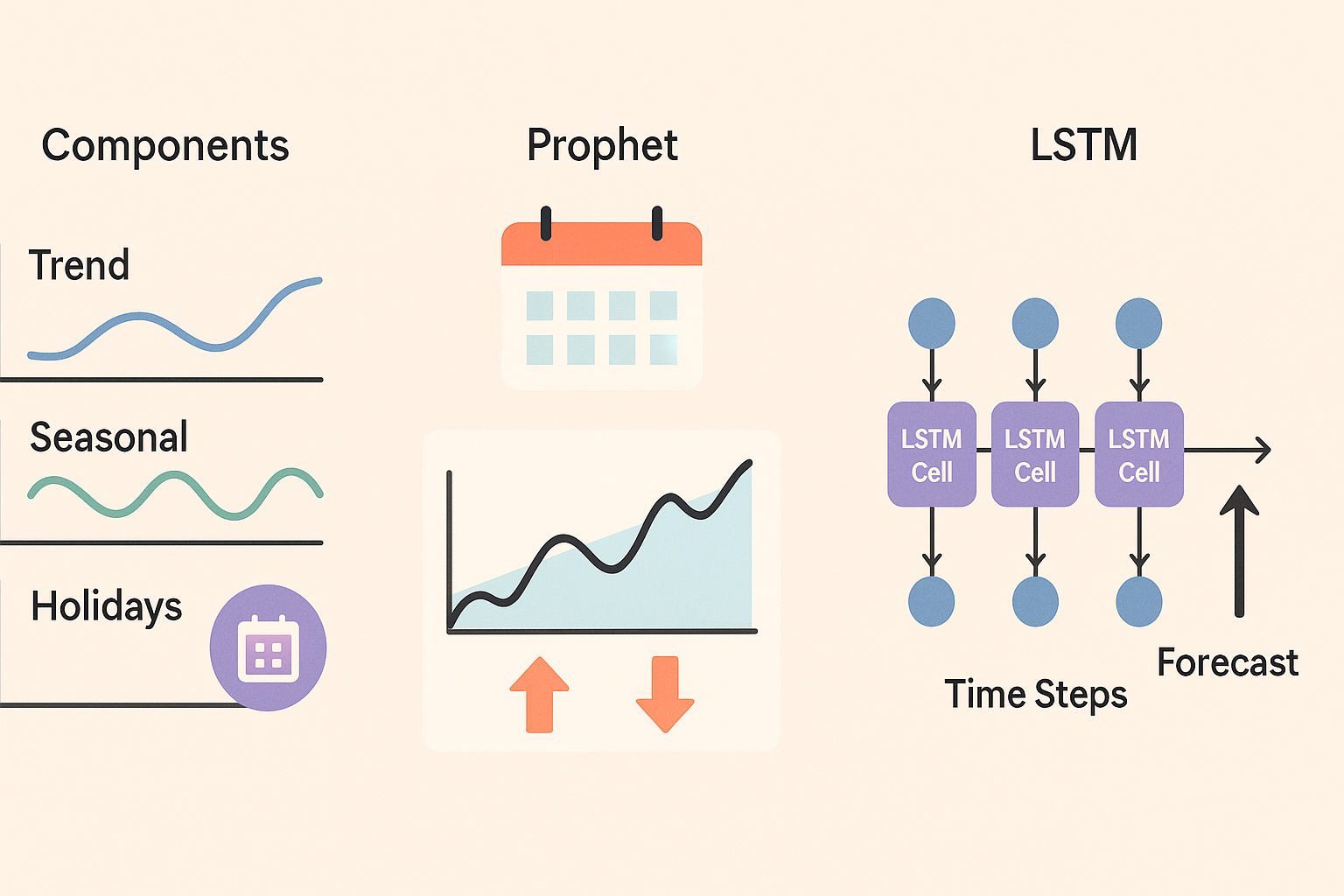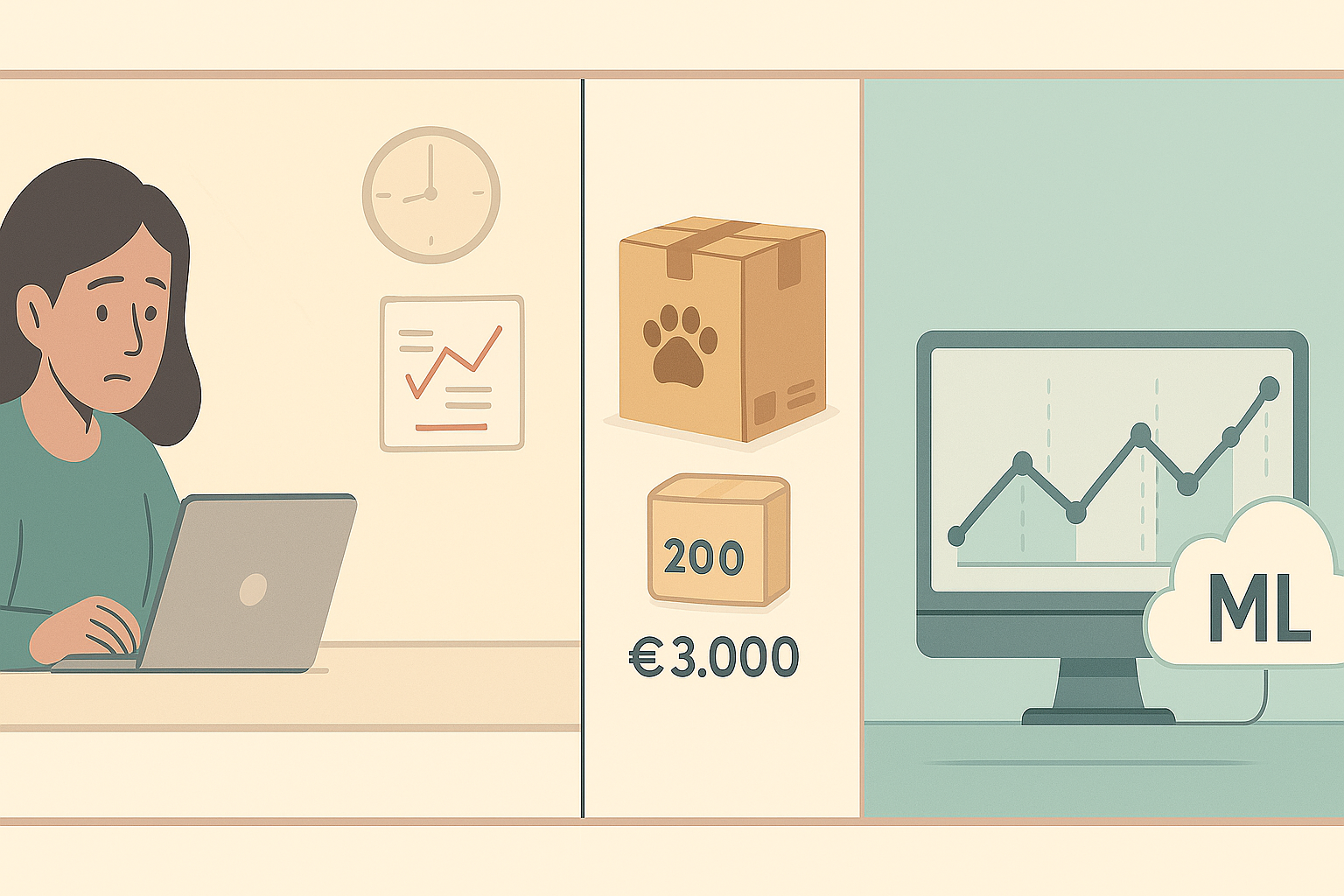Time series forecasting is a critical component for retail businesses looking to optimize their inventory management and pricing strategies. In this comprehensive guide, we'll explore how to implement two powerful forecasting models: Facebook's Prophet and Long Short-Term Memory (LSTM) networks.
Understanding Time Series Forecasting in Retail
Retail demand is influenced by multiple factors, including seasonality, trends, holidays, promotions, and external events. A robust forecasting system must account for all these variables to provide accurate predictions.
Implementing Prophet for Retail Forecasting
Facebook's Prophet is particularly well-suited for retail forecasting due to its ability to handle multiple seasonality patterns and incorporate external regressors.
import pandas as pd
from prophet import Prophet
# Load historical sales data
data = pd.read_csv('retail_sales.csv')
data['ds'] = pd.to_datetime(data['date'])
data['y'] = data['sales']
# Create and fit the model
model = Prophet(
seasonality_mode='multiplicative',
yearly_seasonality=True,
weekly_seasonality=True
)
# Add holiday effects
model.add_country_holidays(country_name='ES')
# Add custom seasonality for back-to-school period
model.add_seasonality(
name='back_to_school',
period=365.25,
fourier_order=5,
prior_scale=10,
condition_name='is_school_season'
)
# Fit the model
model.fit(data)
# Create future dataframe for predictions
future = model.make_future_dataframe(periods=90) # 90-day forecast
# Add external regressors if available
future['temperature'] = temperature_data # External weather data
future['is_promotion'] = promotion_calendar # Promotion calendar
# Make predictions
forecast = model.predict(future)
# Plot results
fig = model.plot(forecast)
fig_components = model.plot_components(forecast)The code above demonstrates how to implement a Prophet model with multiple seasonality patterns and external regressors. The model accounts for yearly and weekly seasonality, holiday effects, and even custom seasonality patterns like back-to-school periods.
LSTM Networks for Complex Demand Patterns
For more complex demand patterns, especially when there are intricate dependencies between different products or stores, LSTM networks can provide superior forecasting accuracy.
import numpy as np
import pandas as pd
from tensorflow.keras.models import Sequential
from tensorflow.keras.layers import LSTM, Dense, Dropout
from sklearn.preprocessing import MinMaxScaler
# Load and prepare data
data = pd.read_csv('retail_sales.csv')
sales = data['sales'].values.reshape(-1, 1)
# Normalize the data
scaler = MinMaxScaler(feature_range=(0, 1))
sales_scaled = scaler.fit_transform(sales)
# Create sequences for LSTM
def create_sequences(data, seq_length):
X, y = [], []
for i in range(len(data) - seq_length):
X.append(data[i:i + seq_length, 0])
y.append(data[i + seq_length, 0])
return np.array(X), np.array(y)
seq_length = 30 # Use 30 days of history to predict next day
X, y = create_sequences(sales_scaled, seq_length)
# Reshape input for LSTM [samples, time steps, features]
X = X.reshape(X.shape[0], X.shape[1], 1)
# Split into training and testing sets
train_size = int(len(X) * 0.8)
X_train, X_test = X[:train_size], X[train_size:]
y_train, y_test = y[:train_size], y[train_size:]
# Build LSTM model
model = Sequential()
model.add(LSTM(50, return_sequences=True, input_shape=(seq_length, 1)))
model.add(Dropout(0.2))
model.add(LSTM(50, return_sequences=False))
model.add(Dropout(0.2))
model.add(Dense(1))
model.compile(optimizer='adam', loss='mean_squared_error')
# Train the model
model.fit(X_train, y_train, batch_size=32, epochs=100, validation_data=(X_test, y_test))
# Make predictions
predictions = model.predict(X_test)
predictions = scaler.inverse_transform(predictions)
# Evaluate the model
actual_values = scaler.inverse_transform(y_test.reshape(-1, 1))
mse = np.mean((predictions - actual_values) ** 2)
rmse = np.sqrt(mse)
print(f'RMSE: {rmse}')
Comparing Prophet and LSTM Performance
Both Prophet and LSTM have their strengths and weaknesses for retail forecasting. Prophet excels at handling multiple seasonality patterns and is more interpretable, while LSTM can capture complex non-linear relationships but requires more data and computational resources.
| Feature | Prophet | LSTM |
|---|---|---|
| Interpretability | High | Low |
| Data requirements | Moderate | High |
| Computational resources | Low | High |
| Multiple seasonality | Excellent | Good |
| Non-linear patterns | Good | Excellent |
| External variables | Easy to incorporate | Requires preprocessing |
| Setup complexity | Low | High |
Deployment Considerations
When deploying forecasting models in production, several factors must be considered to ensure reliable and scalable performance.
- Automated data pipelines for regular model updates
- Monitoring system for model performance
- Fallback mechanisms to handle prediction failures
- Scalable infrastructure to handle multiple stores/products
- Integration with inventory management systems
Remember to regularly retrain your models as new data becomes available. Retail patterns can shift over time due to market conditions, changes in consumer behavior, and other factors.
Conclusion
Implementing time series forecasting for retail demand is a complex but rewarding endeavor. By leveraging models like Prophet and LSTM, retailers can significantly improve their inventory management, reduce stockouts, and optimize pricing strategies.
The key to success lies in understanding the unique patterns in your data, selecting the appropriate model, and implementing a robust deployment strategy that includes monitoring and regular updates.
The goal of forecasting is not to predict the future, but to tell you what you need to know to take meaningful action in the present.
— Paul Saffo


